Raman Gas Analysis with External Power Build-Up Cavity of Line-Narrowed 407-nm Laser Diode
Abstract
1. Introduction
2. Experimental Setup
3. Results and Discussion
3.1. Mode-Matching of the Laser Beam to the External Cavity
3.2. Narrowing of the Laser Linewidth
3.3. Raman Spectroscopy of Ambient Air
4. Conclusions
Author Contributions
Funding
Institutional Review Board Statement
Informed Consent Statement
Data Availability Statement
Conflicts of Interest
References
- Petrov, D.; Matrosov, I. Natural Gas Analysis Using Polarized Raman Spectroscopy. Anal. Chem. 2023, 95, 9409–9414. [Google Scholar] [CrossRef] [PubMed]
- Buric, M.; Woodruff, S.; Chorpening, B.; Tucker, D. Fuel Flexibility via Real-Time Raman Fuel-Gas Analysis for Turbine System Control. In Next-Generation Spectroscopic Technologies VIII; Druy, M.A., Crocombe, R.A., Bannon, D.P., Eds.; SPIE: Baltimore, MD, USA, 2015; p. 94820S. [Google Scholar]
- Ferrugiari, A.; Tommasini, M.; Zerbi, G. Raman Spectroscopy of Carbonaceous Particles of Environmental Interest. J. Raman Spectrosc. 2015, 46, 1215–1224. [Google Scholar] [CrossRef]
- Helmig, D. Air Analysis by Gas Chromatography. J. Chromatogr. A 1999, 843, 129–146. [Google Scholar] [CrossRef]
- Sepman, A.; Ögren, Y.; Qu, Z.; Wiinikka, H.; Schmidt, F.M. Tunable Diode Laser Absorption Spectroscopy Diagnostics of Potassium, Carbon Monoxide, and Soot in Oxygen-Enriched Biomass Combustion Close to Stoichiometry. Energy Fuels 2019, 33, 11795–11803. [Google Scholar] [CrossRef]
- Lambert-Girard, S.; Allard, M.; Piché, M.; Babin, F. Differential Optical Absorption Spectroscopy Lidar for Mid-Infrared Gaseous Measurements. Appl. Opt. 2015, 54, 1647. [Google Scholar] [CrossRef]
- Jiang, J.; Wang, Z.; Han, X.; Zhang, C.; Ma, G.; Li, C.; Luo, Y. Multi-Gas Detection in Power Transformer Oil Based on Tunable Diode Laser Absorption Spectrum. IEEE Trans. Dielect. Electr. Insul. 2019, 26, 153–161. [Google Scholar] [CrossRef]
- Wen, C.; Huang, X.; Shen, C. Multiple-pass Enhanced Raman Spectroscopy for Fast Industrial Trace Gas Detection and Process Control. J. Raman Spectrosc. 2020, 51, 781–787. [Google Scholar] [CrossRef]
- Bai, Y.; Xiong, D.; Yao, Z.; Wang, X.; Zuo, D. Analysis of CH4, C2H6, C2H4, C2H2, H2, CO and H2S by Forward Raman Scattering with a Hollow-core Anti-resonant Fiber. J. Raman Spectrosc. 2022, 53, 1023–1031. [Google Scholar] [CrossRef]
- Knebl, A.; Domes, R.; Wolf, S.; Domes, C.; Popp, J.; Frosch, T. Fiber-Enhanced Raman Gas Spectroscopy for the Study of Microbial Methanogenesis. Anal. Chem. 2020, 92, 12564–12571. [Google Scholar] [CrossRef] [PubMed]
- Yang, M.; Liu, Z.; Xiong, L.; Nie, Q.; Wang, Y.; Gao, S.; Cheng, M.; Yang, D.; Pei, S.; Guo, D. Antiresonant Fiber-Enhanced Raman Spectroscopy Gas Sensing with 1 Ppm Sensitivity. Opt. Express 2024, 32, 4093. [Google Scholar] [CrossRef] [PubMed]
- Pei, S.; Nie, Q.; Liu, Z.; Cheng, M.; Yang, D.; Wang, Y.; Gao, S.; Cheng, C.; Guo, D.; Yang, M. Atmospheric Environment Monitoring by Antiresonant Fiber-Enhanced Raman Spectroscopy With Sub-Ppm Sensitivity. IEEE Sens. J. 2024, 24, 34604–34610. [Google Scholar] [CrossRef]
- Kelly, T.W.; Davidson, I.A.; Warren, C.; Brooks, W.S.M.; Foster, M.J.; Poletti, F.; Richardson, D.J.; Horak, P.; Wheeler, N.V. Sub-Ppm Gas Phase Raman Spectroscopy in an Anti-Resonant Hollow Core Fiber. Opt. Express 2022, 30, 43317. [Google Scholar] [CrossRef] [PubMed]
- King, D.A.; Pittaro, R.J. Simple Diode Pumping of a Power-Buildup Cavity. Opt. Lett. 1998, 23, 774. [Google Scholar] [CrossRef] [PubMed]
- Frosch, T.; Keiner, R.; Michalzik, B.; Fischer, B.; Popp, J. Investigation of Gas Exchange Processes in Peat Bog Ecosystems by Means of Innovative Raman Gas Spectroscopy. Anal. Chem. 2013, 85, 1295–1299. [Google Scholar] [CrossRef] [PubMed]
- Keiner, R.; Frosch, T.; Massad, T.; Trumbore, S.; Popp, J. Enhanced Raman Multigas Sensing–a Novel Tool for Control and Analysis of 13 CO2 Labeling Experiments in Environmental Research. Analyst 2014, 139, 3879. [Google Scholar] [CrossRef] [PubMed]
- Keiner, R.; Frosch, T.; Hanf, S.; Rusznyak, A.; Akob, D.M.; Küsel, K.; Popp, J. Raman Spectroscopy—An Innovative and Versatile Tool To Follow the Respirational Activity and Carbonate Biomineralization of Important Cave Bacteria. Anal. Chem. 2013, 85, 8708–8714. [Google Scholar] [CrossRef] [PubMed]
- Ohara, S.; Yamaguchi, S.; Endo, M.; Nanri, K.; Fujioka, T. Performance Characteristics of Power Build-Up Cavity for Raman Spectroscopic Measurement. Opt. Rev. 2003, 10, 342–345. [Google Scholar] [CrossRef]
- Ohara, S.; Sato, J.; Endo, M.; Yamaguchi, S.; Nanri, K.; Fujioka, T. Trace Methane Detection Based on Raman Spectroscopy Using a High Finesse Optical Resonator. Rev. Laser Eng. 2004, 32, 208–210. [Google Scholar] [CrossRef]
- Hippler, M. Cavity-Enhanced Raman Spectroscopy of Natural Gas with Optical Feedback Cw-Diode Lasers. Anal. Chem. 2015, 87, 7803–7809. [Google Scholar] [CrossRef] [PubMed]
- Wang, P.; Chen, W.; Wan, F.; Wang, J.; Hu, J. Cavity-Enhanced Raman Spectroscopy with Optical Feedback Frequency-Locking for Gas Sensing. Opt. Express 2019, 27, 33312. [Google Scholar] [CrossRef] [PubMed]
- Yang, Q.; Tan, Y.; Qu, Z.; Sun, Y.; Liu, A.; Hu, S. Multiple Gas Detection by Cavity-Enhanced Raman Spectroscopy with Sub-Ppm Sensitivity. Anal. Chem. 2023, 95, 5652–5660. [Google Scholar] [CrossRef] [PubMed]
- Petrov, D.V.; Matrosov, I.I.; Kostenko, M.A. Multipass Raman Gas Analyzer for Monitoring of Atmospheric Air Composition. Opt. Laser Technol. 2022, 152, 108155. [Google Scholar] [CrossRef]
- Petrov, D.V. Multipass Optical System for a Raman Gas Spectrometer. Appl. Opt. 2016, 55, 9521. [Google Scholar] [CrossRef] [PubMed]
- Wen, C.; Huang, X.; Wang, W.; Shen, C.; Li, H. Multiple-pass-enhanced Raman Spectroscopy for Long-term Monitoring of Hydrogen Isotopologues. J. Raman Spectrosc. 2019, 50, 1555–1560. [Google Scholar] [CrossRef]
- Wen, C.; Huang, X.; Shen, C. Multiple-pass-enhanced Multiple-point Gas Raman Analyzer for Industrial Process Control Applications. J. Raman Spectrosc. 2020, 51, 2046–2052. [Google Scholar] [CrossRef]
- Gomez Velez, J.; Muller, A. Trace Gas Sensing Using Diode-Pumped Collinearly Detected Spontaneous Raman Scattering Enhanced by a Multipass Cell. Opt. Lett. 2020, 45, 133. [Google Scholar] [CrossRef]
- Singh, J.; Muller, A. Ambient Hydrocarbon Detection with an Ultra-Low-Loss Cavity Raman Analyzer. Anal. Chem. 2023, 95, 3703–3711. [Google Scholar] [CrossRef] [PubMed]
- Singh, J.; Muller, A. High-Precision Trace Hydrogen Sensing by Multipass Raman Scattering. Sensors 2023, 23, 5171. [Google Scholar] [CrossRef] [PubMed]
- Wang, J.; Wang, P.; Chen, W.; Wan, F.; Lu, Y.; Tang, Z.; Dong, A.; Lei, Z.; Zhang, Z. Highly Sensitive Multi-Pass Cavity Enhanced Raman Spectroscopy with Novel Polarization Filtering for Quantitative Measurement of SF6 Decomposed Components in Gas-Insulated Power Equipment. Sens. Actuators B Chem. 2023, 380, 133350. [Google Scholar] [CrossRef]
- Wang, P.; Chen, W.; Wang, J.; Lu, Y.; Tang, Z.; Wan, F. Dense-Pattern Multi-Pass Cavity Based on Spherical Mirrors in a Z-Shaped Configuration for Raman Gas Sensing. Opt. Lett. 2022, 47, 2466. [Google Scholar] [CrossRef] [PubMed]
- Wan, F.; Wang, R.; Ge, H.; Kong, W.; Sun, H.; Wu, H.; Zhao, G.; Ma, W.; Chen, W. Optical Feedback Frequency Locking: Impact of Directly Reflected Field and Responding Strategies. Opt. Express 2024, 32, 12428. [Google Scholar] [CrossRef] [PubMed]
- Tanner, C.E.; Masterson, B.P.; Wieman, C.E. Atomic Beam Collimation Using a Laser Diode with a Self-Locking Power-Buildup Cavity. Opt. Lett. 1988, 13, 357–359. [Google Scholar] [CrossRef] [PubMed]
- Morville, J.; Romanini, D. Sensitive Birefringence Measurement in a High-Finesse Resonator Using Diode Laser Optical Self-Locking. Appl. Phys. B 2002, 74, 495–501. [Google Scholar] [CrossRef]
- Zhao, G.; Tian, J.; Hodges, J.T.; Fleisher, A.J. Frequency Stabilization of a Quantum Cascade Laser by Weak Resonant Feedback from a Fabry–Perot Cavity. Opt. Lett. 2021, 46, 3057. [Google Scholar] [CrossRef] [PubMed]
- Dahmani, B.; Hollberg, L.; Drullinger, R. Frequency Stabilization of Semiconductor Lasers by Resonant Optical Feedback. Opt. Lett. 1987, 12, 876. [Google Scholar] [CrossRef] [PubMed]
- Fox, R.W.; Oates, C.W.; Hollberg, L.W. 1. Stabilizing Diode Lasers to High-Finesse Cavities. In Experimental Methods in the Physical Sciences; Elsevier: Amsterdam, The Netherlands, 2003; Volume 40, pp. 1–46. ISBN 978-0-12-475987-9. [Google Scholar]
- Kachanov, A.; Koulikov, S.; Tittel, F.K. Cavity-Enhanced Optical Feedback-Assisted Photo-Acoustic Spectroscopy with a 10.4 Μm External Cavity Quantum Cascade Laser. Appl. Phys. B 2013, 110, 47–56. [Google Scholar] [CrossRef]
- Morville, J.; Romanini, D.; Kerstel, E. Cavity Enhanced Absorption Spectroscopy with Optical Feedback. In Cavity-Enhanced Spectroscopy and Sensing; Springer: Berlin/Heidelberg, Germany, 2014; pp. 163–209. [Google Scholar]
- Chen, T. A Generalized Solution of the Eigenmode for a Symmetric Confocal Cavity. J. Chengdu Inst. Radio Eng. 1983, 10–19. [Google Scholar]
- Martin, A.; Baus, P.; Birkl, G. External Cavity Diode Laser Setup with Two Interference Filters. Appl. Phys. B 2016, 122, 298. [Google Scholar] [CrossRef]
- Schrötter, H.W.; Klöckner, H.W. Raman Scattering Cross Sections in Gases and Liquids. In Raman Spectroscopy of Gases and Liquids; Weber, A., Ed.; Topics in Current Physics; Springer: Berlin/Heidelberg, Germany, 1979; Volume 11, pp. 123–166. ISBN 978-3-642-81281-1. [Google Scholar]

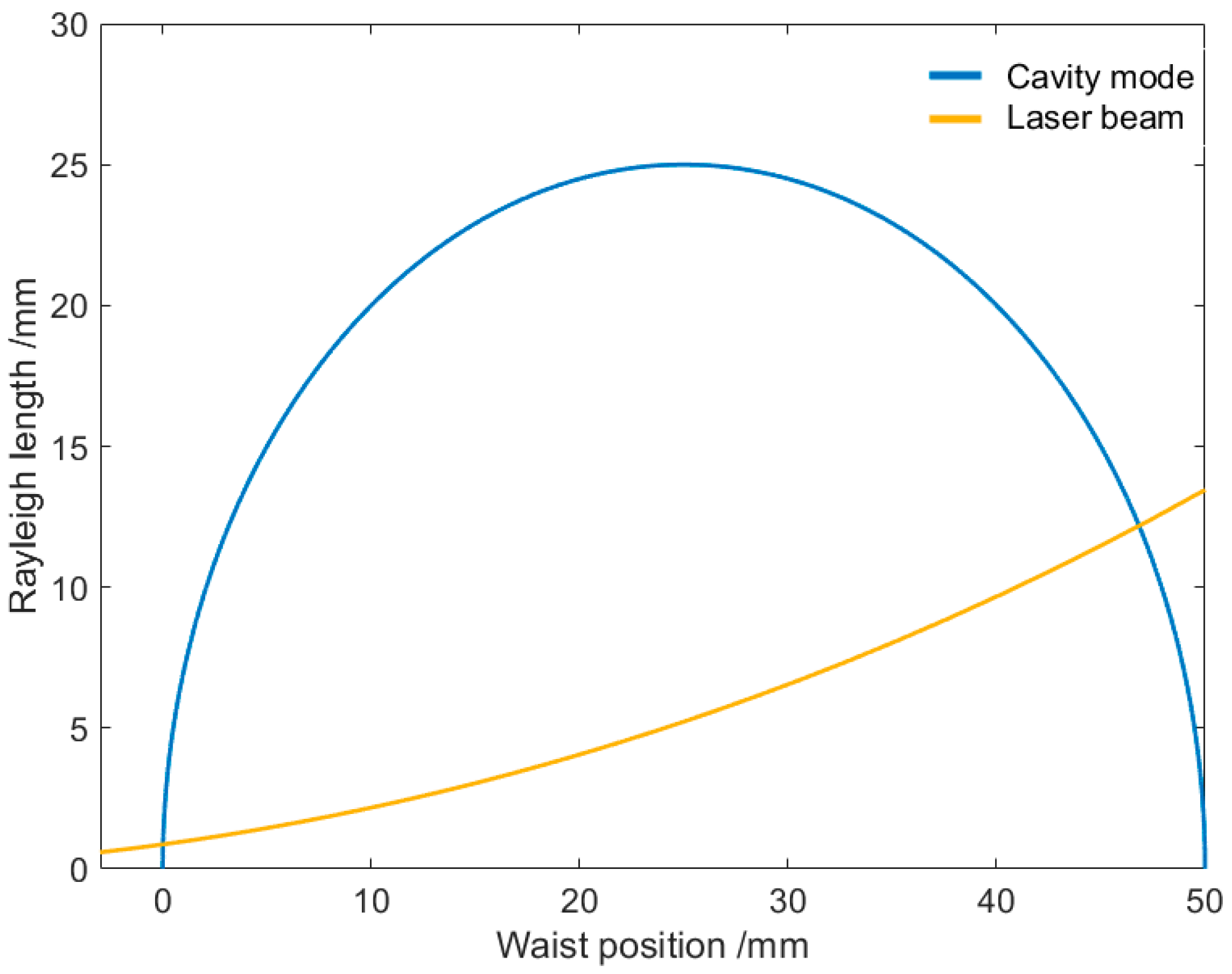
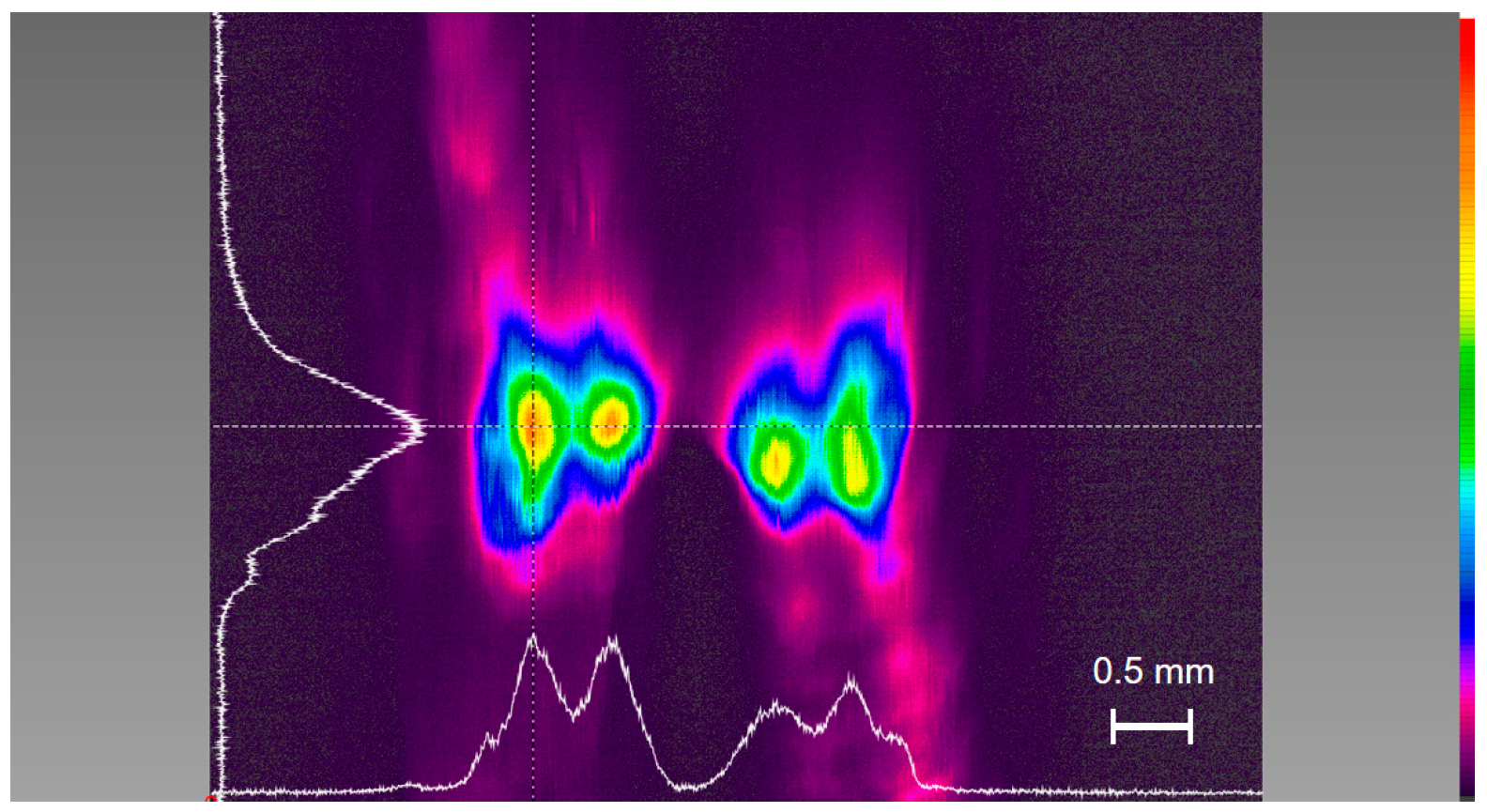
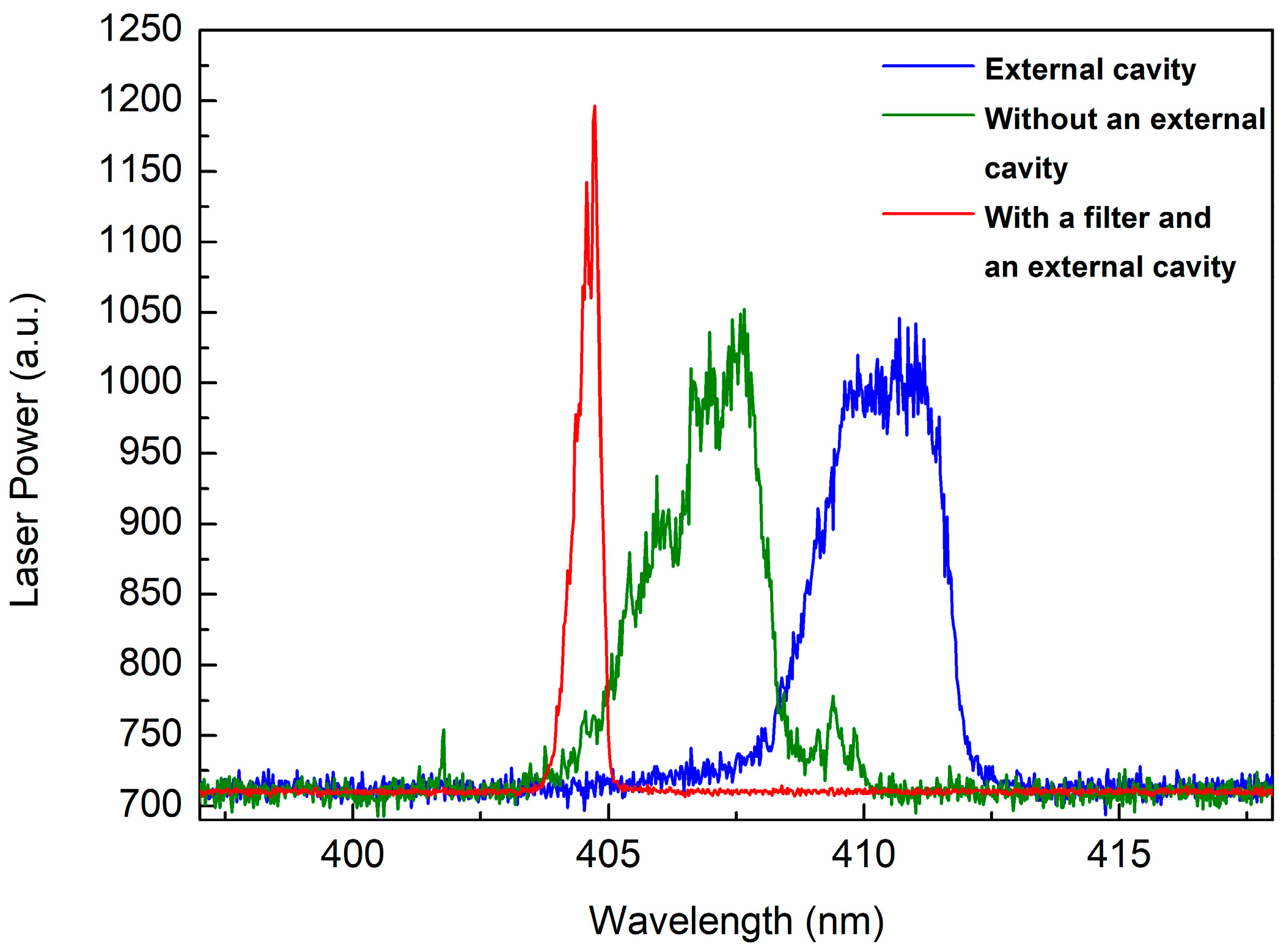

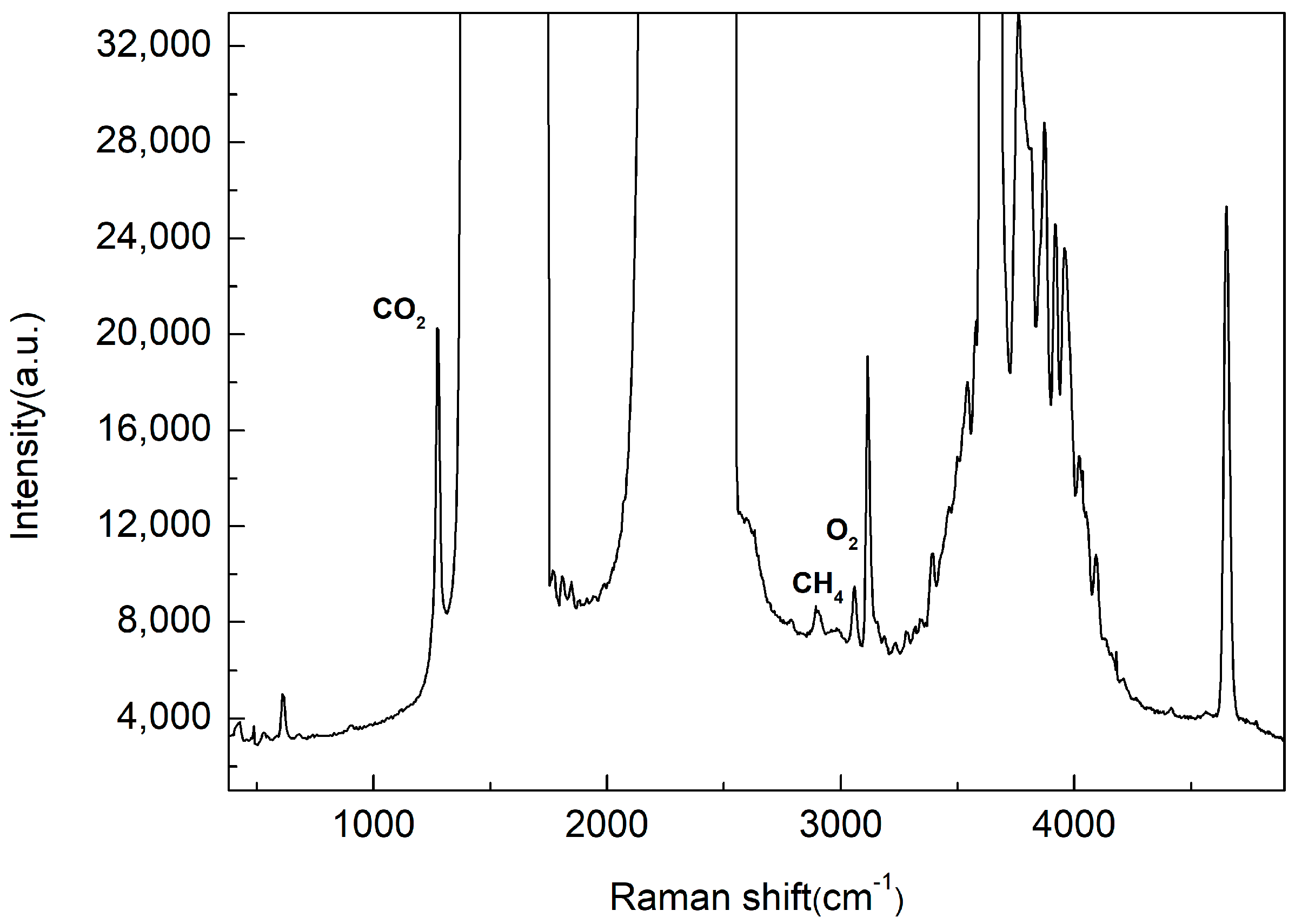
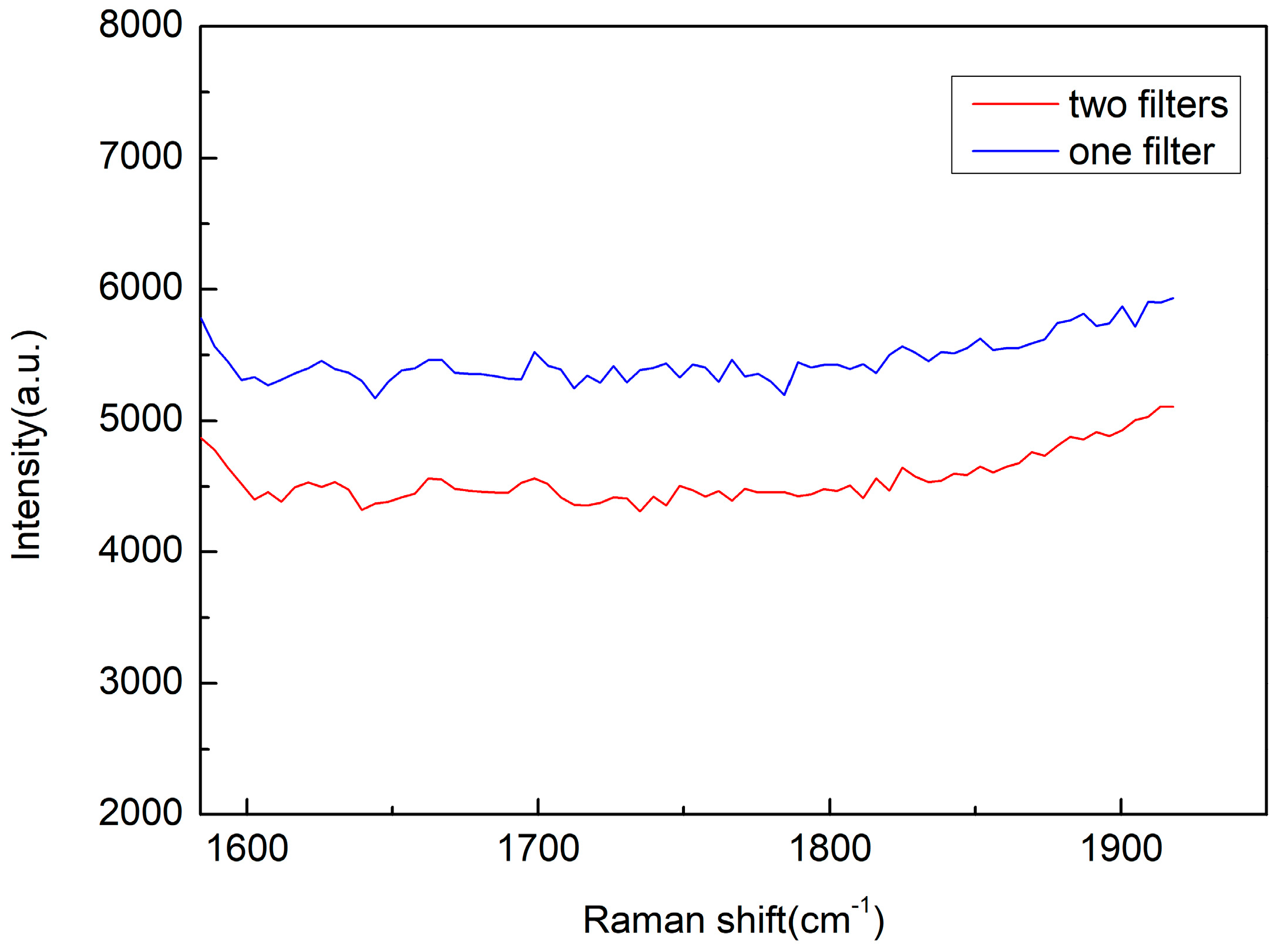
Disclaimer/Publisher’s Note: The statements, opinions and data contained in all publications are solely those of the individual author(s) and contributor(s) and not of MDPI and/or the editor(s). MDPI and/or the editor(s) disclaim responsibility for any injury to people or property resulting from any ideas, methods, instructions or products referred to in the content. |
© 2025 by the authors. Licensee MDPI, Basel, Switzerland. This article is an open access article distributed under the terms and conditions of the Creative Commons Attribution (CC BY) license (https://creativecommons.org/licenses/by/4.0/).
Share and Cite
Yao, Z.; Wang, X.; Zuo, D. Raman Gas Analysis with External Power Build-Up Cavity of Line-Narrowed 407-nm Laser Diode. Sensors 2025, 25, 4600. https://doi.org/10.3390/s25154600
Yao Z, Wang X, Zuo D. Raman Gas Analysis with External Power Build-Up Cavity of Line-Narrowed 407-nm Laser Diode. Sensors. 2025; 25(15):4600. https://doi.org/10.3390/s25154600
Chicago/Turabian StyleYao, Zhongyi, Xinbing Wang, and Duluo Zuo. 2025. "Raman Gas Analysis with External Power Build-Up Cavity of Line-Narrowed 407-nm Laser Diode" Sensors 25, no. 15: 4600. https://doi.org/10.3390/s25154600
APA StyleYao, Z., Wang, X., & Zuo, D. (2025). Raman Gas Analysis with External Power Build-Up Cavity of Line-Narrowed 407-nm Laser Diode. Sensors, 25(15), 4600. https://doi.org/10.3390/s25154600




